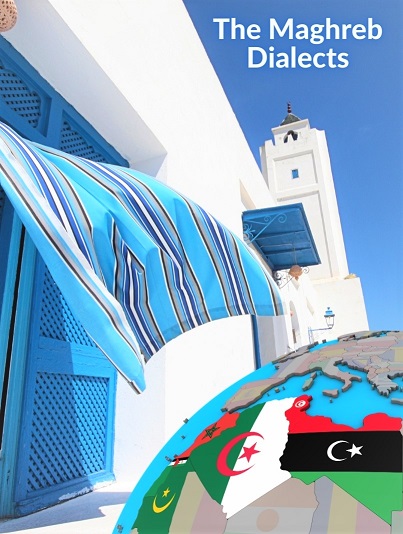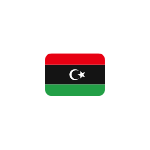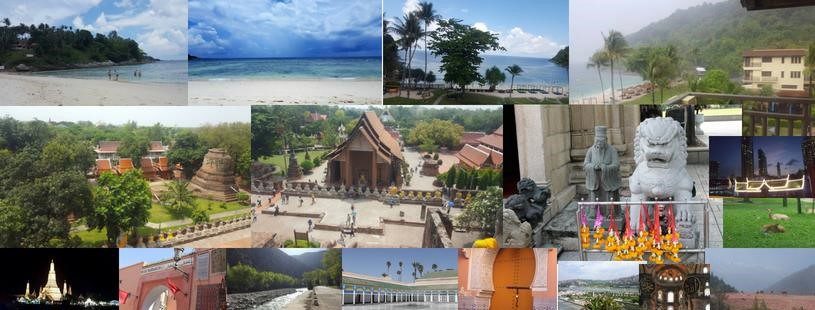
The Maghreb dialects are among the Arabic dialects spoken in the countries of the Maghreb. Morocco, Algeria, Tunisia, and Libya. Despite the similarity, these dialects are not from the same origin. For example, the Libyan dialect is more oriented towards the Bedouin accent. The Moroccan is more influenced by the Andalusian civilization.

Libyan dialect
The Libyan dialect is classified within the pure Bedouin dialects. The Libyan dialect is distinguished by pronouncing the letter “qāf” (ق) as “Jim” (جيم) and using the letter “n” (نون) instead of “alef” (الف) in their speech. So instead of (ored| أريد), they say (noreed|نريد).
One of the advantages of the Libyan dialect is that it contains a huge amount of vocabulary. There is no noun or verb without many synonyms that may be used instead of it, all of which come From the Arabic language.
The Libyan dialect has several accents, including:
- The Eastern dialect of Cyrenaica (Barka | برقة) province in the eastern part of Libya.
- The dialect of the Central Region, which is a pure Bedouin dialect used by the tribes of the western region.
- The Western or Tripoli dialect, used in the capital, Tripoli, is considered somewhat influenced by the Italian language.
- The dialect of the Badia tribes is characterized by the absence of any extraneous vocabulary and is full of words in the ancient Arabic language.
| Libyan dialect | English word |
| قعمز | ga’mez | Sit |
| قنين | ganen | Beautiful |
| ديما | dema | Always |
| هلبه | halbah | Many |
| سطل | satl | Aquarius |

Algerian dialect
Algerian Arabic arose in the eighth century under the influence of the Arabic and some of the Amazigh, Punic, and Latin languages. The Arabic language entered Algeria with the advent of the Islamic conquest of the Maghreb, before that the Amazigh and Punic languages prevailed. When the Amazighs entered Islam and mixed with Arabic speakers, the Algerian Arabic changed a bit and was affected by the local language, so it adopted many of its words and even its grammatical rules.
The Algerian Arabic dialect is characterized by several regional formations belonging to two different groups: the urban pre-Hilalian dialects influenced by the Andalusian dialect, and the Bedouin Hilalian dialects.
The Algerian Hilalian dialect belongs to three language groups:
- Eastern Hilalian dialects: It is spoken in the high plateaus around Sétif, Tébessa, Biskra, Bordj Bou Arreridj, M’sila, Djelfa, and Laghouat.
- Central Hilalian dialects: from central and southern Algeria, south of Algiers and Oran.
- Al-Maqal dialects: spoken in the western part of the Oran sector.
| Algerian dialect | English word |
| ازّي | azzi | Shut up! |
| الحَوْش | al-hosh | The yard |
| عنتير | antir | Strong |
| دْلَّاعْ | al-delay | Watermelon |
| كروسة | karoussa | Car |

Moroccan dialect
The Moroccan dialect is one of the Arabic dialects and is used by most Moroccans and is considered the mother tongue of 50% of Moroccans, and it comes second in the regions speaking the Amazigh language.
This dialect in general is a legacy of the Islamic civilization, but it was influenced by the languages of the non-Arab peoples that contributed to building this civilization, such as the original Amazigh inhabitants in addition to the Andalusians and the French.
In Morocco, each region has its own dialect, but the differences are slight and do not affect understanding and communication. However, the original Moroccan dialects are now extinct due to the spread of the colloquial language. It is confined between a few dialects:
- The Andalusian dialect that spread in the city of Fez and partly in Meknes, Salé, Rabat, and Bilad Gabala.
- Bedouin dialect, which is the dialect of the Arab tribes in the West, Al Haouz, Chaouia, Rudigha, Doukkala and Abda.
- Hassani dialect, which is the dialect of the Sahrawi Arabs.
| Moroccan dialect | English word |
| بزاف | bezzaf | A lot |
| خايب | khayeb | Ugly |
| حيط | heit | Wall |
| راه | rah | See |
| مزروب | mazroub | In a hurry |

Tunisian dialect
The Tunisian Arabic dialect is one of the Maghreb dialects spoken in Tunisia. The Tunisians recognize it as the vernacular or the spoken language to distinguish it from classical Arabic, and they also call it Tunisian Language.
The Tunisian dialect is used throughout the country, with variations from one side to the other. it is similar to the dialects of eastern Algeria, western Libya, and northern Morocco.
The Tunisian can, through his accent, communicate with the Libyan, the Algerian, or the Moroccan without having to speak in their accents, due to the similarity of their dialects. One of the characteristics of the Tunisian dialect over most other Arabic dialects is its correct and proper pronunciation of most of the twenty-eight Arabic letters.
Tunisian colloquial dialect
The Tunisian colloquial dialect is a dialect based on the local accent and the Amazigh language and dominated by the Arabic vocabulary. It has also been influenced by French, Italian, and other ancient and modern languages such as Turkish and Andalusian.
The degree of dependence on the non-Amazigh words varies from one region to another. In rural areas, their accent has predominated the phrases of Amazigh origins, and their inhabitants do not pronounce the “Hamza” (همزه) at all.
In contrast, the residents of the coasts and the capital do not use Amazigh vocabulary that much. They use many French, Turkish, Italian, Spanish, and recently English words to replace the missing words and expressions. Because of this huge import of foreign words, the Tunisian dialect has moved away from classical Arabic, until it is considered a language in itself and not a dialect.
| Tunisian dialect | English word |
| حوت | Hout | Fish |
| شتاء | Shetaa | Rain |
| بخيل | bakhel | Lasy |
| شكون | shkoun | Who |
| ياسر | Yaser | A lot |
Conclusion
In general, the Libyan, Egyptian, and Moroccan dialects cannot be considered one language, even if they are all Arabic dialects. In Libya, the Bedouin dialect predominates, and thus the Libyan dialect is a major exception in terms of accent from the rest of the Maghreb countries. The contemporary Egyptian language combines Pharaonic, Coptic, and modern Egyptian spoken language, while in Morocco, for example, the Andalusian influence is more visible. In these dialects, there are also words from European languages, especially the French language, as a result of the French colonialism in Algeria, Tunisia, and Morocco. As for Libya, we find the use of Italian words and some Amazigh, Turkish and African words.
Feel free to leave a comment or to Contact Me for an open discussion!
